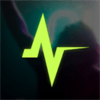Clubcast - The End of Live Music?

It's no secret that technology drives music. Every age has its innovators, and each its instrument. The world's history was forever altered when, in 1931, the electric guitar became a staple of rock and jazz music. Think of the 1950s without Elvis, or the 1960s without the Beatles, the Doors and Hendrix. The fact is, each generation is defined by its music, especially in America.
Teenage rebellion has become a cliche and each new round of kids looking to separate themselves from their parents finds a sound that no previous generation has understood. It's a code of sorts, a common bond that connects peers while excluding those pesky parents. Mom and Dad were never supposed to understand the Clash, the Who, or, god forbid, the Sex Pistols - and Bowie wasn't exactly conservative either.
Today, the sounds have changed, but much of the theme is the same. The most recent musical revolution was brought about during the dawn of the digital age, and many are questioning the art status of this new music, a genre known as EDM (Electronic Dance Music.) Clubcast, a service that allows DJs to appear before clubs live-over video screens, will only increase the skepticism.
Traditionally, live shows are the testing ground for a musical act. Sure, with loads of production money, nearly anyone can sound good. The best musicians, however, shine during live performances with virtuosic flair and wild energy that recordings never bring to light. With electronic music, the 'live' element often diminishes. When the DJ simply presses buttons, many are left wondering if anything of substance is happening at all.
Many would argue that yes, there is. DJs, well, good ones, put on a show that's nothing like their recorded work, tinkering songs on the fly, adding effects, and putting together an often 2-hour long journey by seamlessly blending different tracks. The argument of whether or not DJs are musicians persists, with passionate conviction on both sides.
And, of course, there are always lazy performers who simply press a few buttons and allow computer programs to do most of the work.
So, what exactly does Clubcast offer? Essentially, imagine that a famous DJ is playing a massive club in a major city. Smaller clubs usually have problems booking big names, but with Clubcast, they can offer a live stream of the DJ at his table, and, since it's two-way, the DJ will see any crowds tuned in. Since a huge part of the club going experience is a high-quality sound system and the spectacle of lights as opposed to a live performer, the service's developers hope that it'll catch on as a low-cost club experience
The obvious problem with Clubcast is that it furthers the distance between the artist and the crowd, which begs the question: is there anything to be said for seeing live music anymore? How soon before every club is playing pre-recorded mixes, which isn't too uncommon either.
The fact is, the music industry will always be looking for ways to cash in on artists, and small venues need ways to keep up with big players. This new service gives more power to the little guy, and it's just another sign of the changing definition of music that this generation, more than any other, is experiencing. What's more, it's showing how technology is changing every industry.

Subscribe to Our Newsletter!
Latest in Marketing








